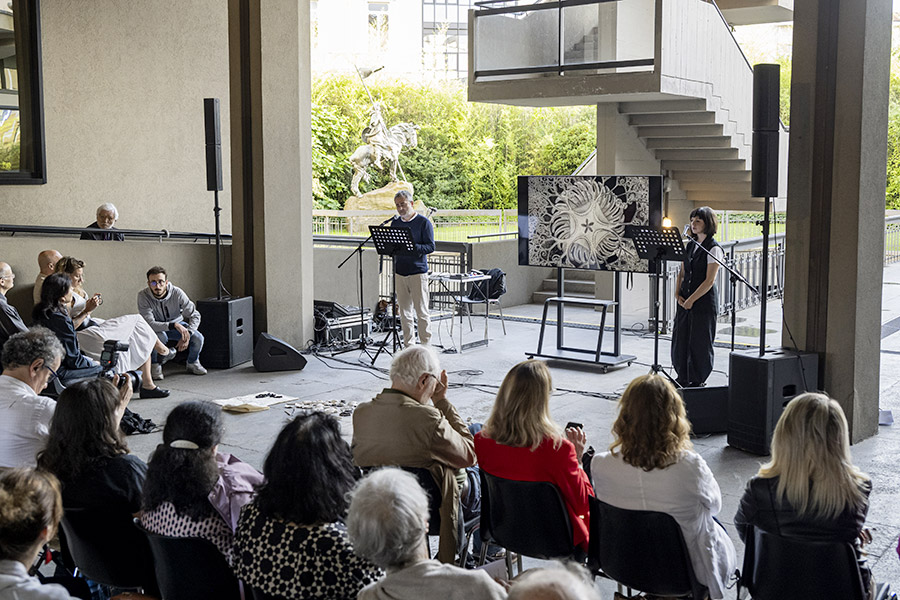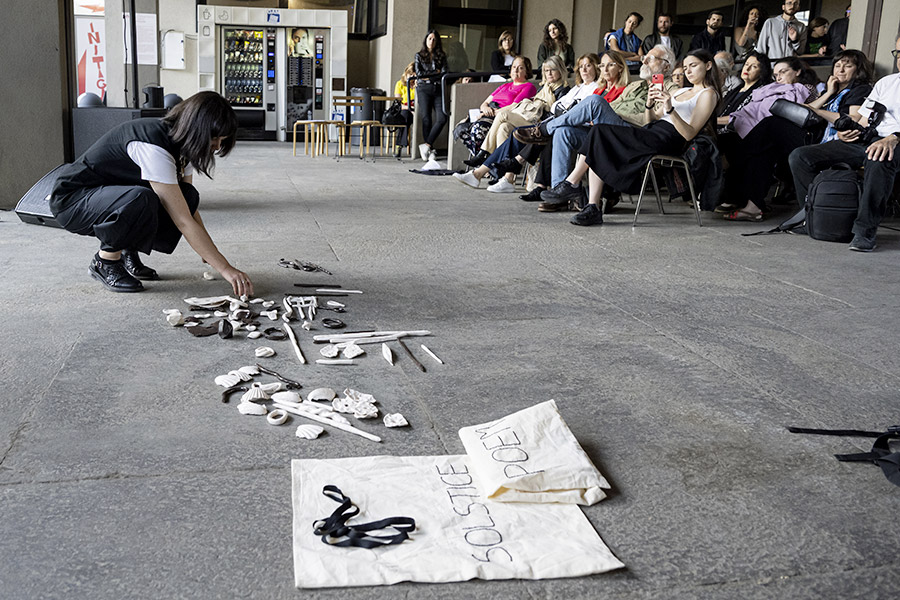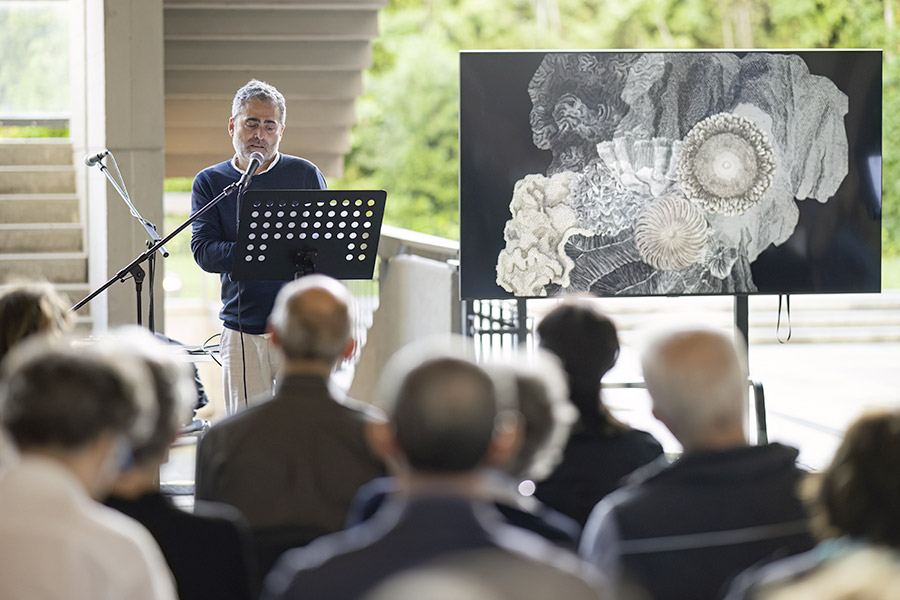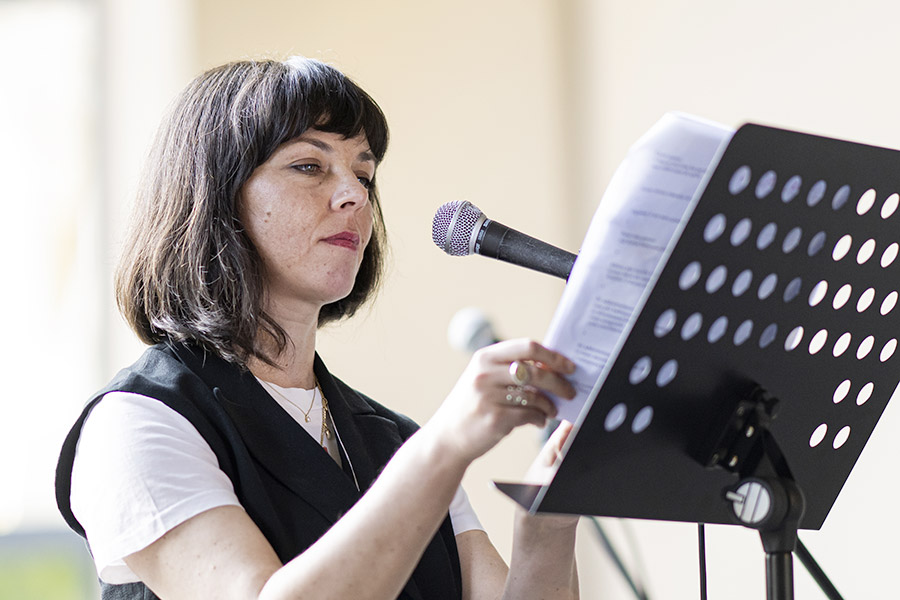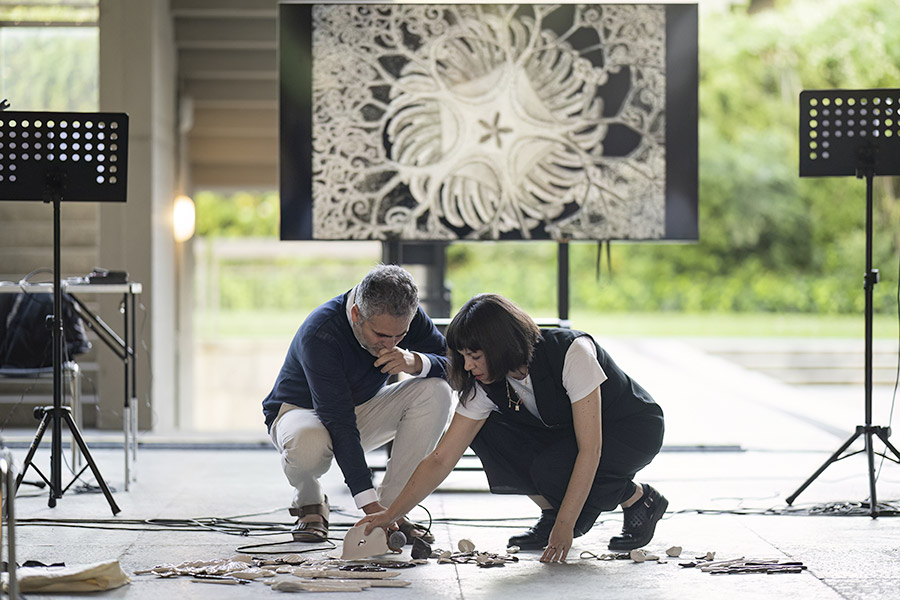Francesco Balsamo was born in Catania in 1969. A poet and visual artist, he uses different media: paper, fabric, collage, video, and techniques including pencils, tempera, oil and pastels. For some time now, he has been combining drawing and writing verse, alternately drawing and writing verse. For Francesco Balsamo, drawing and writing animate the same bodily and celestial adventure, restless and in constant demand, not of a meaning, but rather of an even more secret key, traceable to the very nature of seeking or living. He has published: Appendere l'ombra a un chiodo (“7 Poeti del Premio Montale”, Crocetti 2002); Discorso dell'albero alle sue foglie (Stamperia dell'Arancio 2003); Ortografia della neve (Incerti Editori 2010); Tre bei modi di sfruttare l'aria (Forme Libere 2013); Cresce a mazzetti il quadrifoglio (Ponte del Sale 2015); Luci e animali feriti (Coup d'Idée Edizioni d'Arte di Enrica Dorna 2019). Vetro veglia casa tintinnio (MC Editions 2023). Three of his books of drawings: Non copiare dagli occhi (Uncertain Publishers 2012); Album dei passaggi e dei culmini (Lo Magno Gallery 2017), Come (Officina delle immagini, 2019).
Mariagiorgia Ulbar published I fiori dolci e le foglie velenose (Maremmi 2012), the silloge Su pietre tagliate e smosse within the Undicesimo quaderno italiano di poesia contemporanea (Marcos y Marcos 2012), the illustrated plaquettes Osnabrück and Transcontinentale (Collana Isola 2013), the collection Gli eroi sono gli eroi (Marcos y Marcos 2015), Un bestiario (Nervi Edizioni 2015), Lighea (Elliot 2018). Hotel Aster (Amos 2022), Gèlita (B#S Editions 2024). She teaches, translates, models ceramics for “poetryandpottery projects”. Since 2012 she has been editor and curator of La Collana Isola, which publishes small experimental books of poetry and illustration.
A Globe to Add. Solstice poem
“A Globe to Add. Solstice Poem” is a composite work, created in the time from solstice to solstice. It consists of an animation created by Balsamo, ceramic objects made by Ulbar and a text in verse written in an epistolary collaboration.
The animation is the result of the superimposition of elements belonging to different scientific plates, the plates of the Encyclopédie, the work that was meant to “illuminate the darkness with the light of reason”. Shapes that could look at the same time like shifting land masses, large moving clouds or water that submerges or leaves uncovered. The ceramic objects are line segments, circles, pierced planes, pieces of shells, small tongues, spinning tops, faceted stones and other irregular shapes. They are made of black and white earth and refer to the idea of darkness and light, the legacy of backwash and play as an infinite possibility of analogical association. Finally, the poetic text was written in collaboration, setting up an epistolary exchange whereby the sending of a fragment was followed by a response that added an element and relaunched, until arriving at a single jagged but cohesive text whose title tells of its intrinsic nature.
